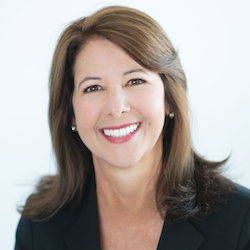
and CEO Kimberly S. Lody
Capital Senior Living executives said they are “operating with a tremendous sense of urgency,” in a “challenging” environment Thursday as they released second-quarter results, but they expressed confidence in actions the company is taking to improve performance.
“While the impacts of activities we began just a few months ago are not yet evident in our second-quarter financial results, there are several indicators that the initiatives are taking hold and our business is stabilizing,” President and CEO Kimberly S. Lody said.
Such indicators, she said, include improvements in revenue per occupied room, which increased 40 basis points over the second quarter of 2018, 50 basis points from the first quarter of 2019 and 60 basis points for the first six months of 2019 over the same period in 2018.
Improvements related to operating costs and employee retention are other positive trends, Lody said.
As Lody noted, those positive trends weren’t obvious in some of the numbers reported for the quarter:
- Revenue was $113.1 million, a 1.3%, decrease from the second quarter of 2018.
- The company’s net loss for the second quarter was $12.5 million.
- Income from operations, including all communities, was $0.2 million in the second quarter of 2019 versus $3.6 million in the second quarter of 2018.
- Occupancy was 82.4%, a decline of 70 basis points from the first quarter and a decrease of 280 basis points from the second quarter of 2018.
Occupancy across the company’s communities varied based on supply and demand in particular markets, the company’s competitive position in the markets and the work of local community teams, Chief Financial Officer Carey P. Hendrickson said.
“Sixty-nine of our 128 communities had an occupancy of 85% or greater in the second quarter of 2019, with 47 of those above 90%,” he said. “That leaves 59 communities with occupancy below 85%.”
Capital Senior Living expects lower operating and financial results in the second half of the year compared with the first half, Hendrickson said, based in part on occupancy declines.
“We are pleased with the performance of about half of our communities, but the other half still have a considerable amount of work to do,” he said. “Our focus for the second half of the year will remain on continuing to stabilize and invest in our operations as we create a platform for growth in the years ahead. We are operating with a tremendous sense of urgency and expect these actions to drive stronger results, but we can’t predict the timing of that improved performance, particularly in environment remains challenging.”

